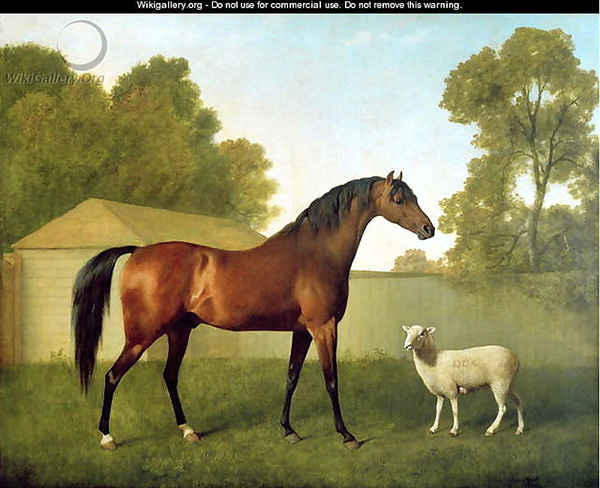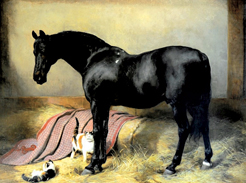Fads of Celebrated Horses
comad September 3rd, 2014
forgotten books
digitised by Google
Fore’s Sporting Notes and Sketches
volume 24 1907
page 128
THE FADS OF CELEBRATED HORSES
By Lilian E. Bland
Horses, like ourselves, have their likes and dislikes, fads and fancies, and they can be as eccentric as any millionaire, only such proceedings on the part of horses are not as a rule encouraged by their owners but here, also, there is a rule for poor and rich. A celebrated racehorse is not beaten or starved into submission, like his humbler brethren, when they have an inconvenient will of their own; he is, on the contrary, a somewhat pampered individual , allowed to indulge his whims to a certain extent. The life of most aristocratic horses, shut up in stables for the best part of the twenty-four hours, is not one that tends to develop their brains, yet horses have more intelligence than most people give them credit for, and the more a horse is brought in contact with human beings, who will understand and make a friend of him, the more intelligent he becomes.
With the present system of racing thoroughbreds as two year-olds, one wonders why they are not all nervous and bad tempered; but now that racing, for the majority of owners, is merely a business gamble, it is no use appealing to their common sense. No horse should be subjected to the severe strain of training until his frame and muscles have had time to develop under natural conditions – soundness, temper, and staying qualities would be improved, and the percentage of useless animals in training would, I imagine , be considerably less than it is at present. Some breeds of horses certainly have a strain of bad temper and crankiness in the family; chestnut horses are supposed to be more hot-tempered than their cooler-coloured brethren.
The celebrated ‘Eclipse’ [1] was a chestnut horse with a very strong will of his own, and it is interesting to note that in the last twenty years his descendants, through ‘Galopin’ (males only), have accounted for thirty-three per cent of the winners of the Two Thousand, Derby, and St. Leger.
‘Eclipse’ was foaled in 1764 by ‘Marske’ ; his dam, ‘Spiletta’, was by ‘Regulus’, a son of the ‘Godolphin Arabian’ (also known as ‘Barb’), whose name originally was ‘ Scham.’ The history of ‘Scham’ is curious; he was sent with other Barbary horses as a present from the Bey of Tunis [2] to Louis XIV., [3] and ‘Scham’ brought his royal pedigree in an embroidered bag attached round his neck by a silken cord. Unfortunately, the horses were not appreciated, and, thinking ‘Scham’ was too vicious to manage, they sold him to a carter. One day, when the streets were slippery with frost, the horse fell under a heavy load, and was being brutally ill-treated, when a Quaker who was passing took pity on him, and, out of compassion, bought him for 15 louis, [4] and became at the same time owner of a Moor and a cat, who, equally devoted to the horse, had followed him in his misfortunes. After many ups and downs the ‘Barb’ became the property of Lord Godolphin, and died at Gog Magog, near Cambridge, in 1753, at the age of 29. The hot temper, which condemned ‘Scham’ to the shafts of a cart, relegated ‘Eclipse’ (whom William Wildman had bought for 80 pounds at Tattersall’s), to the hands of an Epsom rough-rider, who worked him hard all day and took him out at night on poaching, excursions, and, somewhat subdued by this treatment, he became sufficiently tame to train.
He was the most self-willed horse that ever looked through a bridle, and his jockey, John Oakley, never attempted to hold him. The horse liked to make his own running in his own way, and he occasionally ran away, but as he always came in first, and never failed to pull up on passing the winning-post, it did not matter. Dennis O’Kelly afterwards bought him for 1750 pounds, and as, apart from the races he won, his owner made 25,000 pounds out of him as a stallion, he was a cheap purchase.
The hair from his tail is plaited into the loop on the Challenge Whip, formerly the most prized of racing trophies, and his hoof, gold-mounted, was presented to the Jockey Club by William IV.
Many horses are devoted to some animal, while they would savage any of their attendants. ‘Dungannon’ was a savage at the stud, but one day a man driving sheep along the road, picked a lamb up that had become too lame to walk, and threw it over the palings; [5] as it happened, it fell into ‘Dungannon’s’ paddock, and the horse adopted it, and became so devoted that he would never be separated from his pet lamb with which he is represented in the picture by George Stubbs. [6]
‘Voltigeur’s’ [7] playfellow was a tortoiseshell cat; when his friend was in the rack he would put up his head, and puss would crawl along his nose and neck to her accustomed resting-place on his quarters.
Landseer painted the horse with his head down, ‘ whispering soft things to his furry friend,’ as the groom showed the artist that the cat would not stay on Volti’s back unless the rugs were on.
Horses recognise people by their voices. ‘Don John’ and ‘Jack Spigot’ both detested Bill Scott, [8] and became furious if they heard his voice; while ‘General Chassé’, who was a glutton over his food, would pause with his mouth full and grunt if he heard Bob Johnson’s voice; and Fobert had to employ a code of signals with the boy who rode ‘Meretrix’ as she became nervous and fidgety at the sound of his voice. ‘Lanercost’s’ friend was a dog, who was allowed to accompany the horse half-way to Doncaster before the meeting of 1841. Apparently, the dog did not at first miss his companion, but during the Doncaster week, although he had never been there before, he turned up at Pigburn, and rushed into ‘Lanercost’s’ box at stable-time, and both were equally delighted at meeting. The dog, however, was hoaxed out of the box on the pretence of a cat, but he revenged himself for the cat cheat during the night, by climbing to the loft above and killing a cageful of ferrets. He was also sadly remembered by a gentleman who wanted to have a peep at ‘Lanercost’ in the van, while crossing the Mersey to Chester, and a fox, as well as his dog opponents, rarely survived an encounter with the champion.
‘Malton’ would never enter a stable unless the door was very wide, when he would canter in; ‘Pantaloon’ hated a boy or a dog; while ‘Bird Catcher’s’ antipathies extended to pigs and hens, and he turned savage if they crossed his path, so he must have had a lively time in Ireland! ‘Gemma di Vergy’ insisted on always having a boy near him all day, and one had to sleep in the next stall at night. This dislike to being left alone began as a yearling, when, having, in some extraordinary way, climbed over a partition, he was found with his fore-feet resting on the window-sill, gravely inspecting the yard.
‘Rataplan ‘was a very lazy horse, and would lie stretched at full length in his box while they plaited his mane, and always took a siesta after meals; but at exercise, if he chose to kick, no boy could remain in the saddle, and having got rid of his rider he would walk off home.
Some of the inmates of the Cawston stud were ‘faddy.’ ‘Helen’, Lord John Scott’s charger, whom for a bet he rode up the steps of the Bank in Dublin, cashed his cheque, and descended in safety, was devoted to a goat. This mare, like ‘Lottery’, ‘Pickpocket’, and others, hated a jockey, and had to be mounted in an overcoat to hide the colours. ‘Hobbie Noble’ was nicknamed the Hermit, for he was never seen in company, but he would answer to a whistle just like a dog. ‘Camel’, whom Mr. Theobald used to refer to as his ‘bit of whalebone,’ had a pal in his paddock in the shape of a white rabbit. A horse that lived up to his name was ‘Wanderer’, he was always restless, and was never known to lie down while at the stud; he wore a cradle to prevent him tearing himself to pieces. With people he was harmless and good-tempered, but it was impossible to catch his eye, for he would take no notice of any one, and just wander round his paddock with a vacant stare, and if the door of his box was left open, he would carry every bit of his litter out in his mouth, and put it down in the paddock. Another favourite amusement of his was to turn on the water-cock and let the water rush through the trough in his box.
‘Chanticleer’ was one of the ‘mad’ horses, but I’Anson got him much quieter, although the horse always refused to go up any passage, and would stop and roar like a bull, and by way of variation would kick all day long. His boy once tried to calm him in one of his frenzies, and was with difficulty extracted alive through the window of the box. There is a beautiful print of this horse from the painting by Hillyard.
‘Surplice’, as a yearling, had a narrow escape: his first experience of a snow-storm frightened him so much that he dashed at a wall and turned a somersault into the adjoining garden, fortunately with no injury to himself.
‘Isaac’, a beautiful grey horse by ‘Figaro’, was bought at Doncaster by Sam Darling for the sum of 46 pounds. He had a very wayward temper, and never did much good until Sam bought him. Isaac Day asked to have the mount on him at Bibury, and returned him, saying that ‘his own back would never be itself again after the job.’ The horse was near-sighted, and made tremendous jumps over his fences; but Sam generally rode him in his flat races, of which he pulled off forty-six . , and ran several over hurdles. There is a print of him from a painting by Woodward, showing Sam Darling tucking up his cuffs, which he had a trick of doing before a race. Isaac would not tolerate the touch of a whip or spur, and went best when Sam kept shouting at him, ‘ Come along, old ‘un ’
‘Merlin’, for whom Lord Foley gave 2000 guineas [9] as a two year-old, broke his leg, and his remembrance of the slings made a mad horse of him, and this accident was the cause of a remarkable kind of stringhalt ; the horse used to lift each leg and shake them for some seconds in succession. Tyler was the only groom who dared, go near him, armed with a heavy stick, and once in the absence of Tyler an unfortunate groom went into his box, and the horse tore him to pieces – he only lived two hours after they got him out of the box. When ‘Merlin’ was being painted, he yapped as if he would devour both painter and easel, till his head and breast were all covered with foam.
‘Red Hart’ used to chase his quarters round and round, until he had his box steaming like a vapour bath; while ‘Oiseau’ had his temper ruined by being pulled out three times in one week on the Curragh, when he was quite out of form. He was never easy for one moment, and would stand and listen with his head on one side as though waiting for some ghostly tormentor, and for noise he was unequalled.
The late Duke of Portland used to say that a horse should not be allowed on a racecourse until it could face anything, and he carried out his theory by having his horses walked past a drum-and-fife band, flags, etc. ; screws of powder were also exploded in the corn-bin, until the horses would barely raise their heads out of the manger at the report of a pistol.
Notes:
Eclipse (1764 – 1789): Eclipse was a bright chestnut with a narrow blaze running down the length of his face ending between his nostrils. His right hind leg had a white sock. He was an outstanding, undefeated 18th century British Thoroughbred racehorse who won 18 races, including 11 King’s Plates. After retiring from racing he became a very successful sire. Ninety five per cent of thoroughbreds trace their descent to Eclipse in the male line and many of the remaining five per cent have him in their pedigrees.
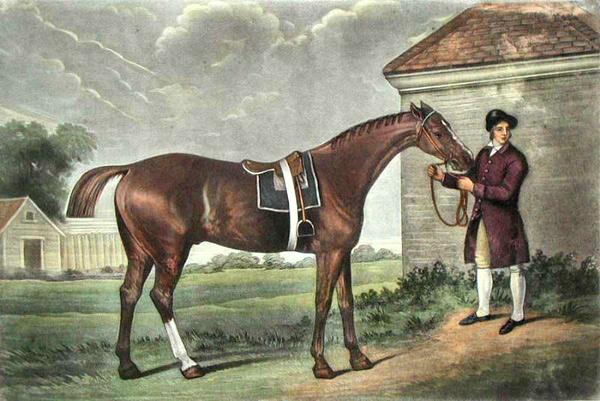
Eclipse by George Stubbs 1724-1806
Wikipedia
2.
Bey of Tunis: The Beys of Tunis were the monarchs of Tunisia from 1705 until 1957, when monarchy was abolished.
Louis XIV: Louis XIV (1638 – 1715) known as Louis the Great (Louis le Grand) or the Sun King (le Roi-Soleil), was a monarch of the House of Bourbon who ruled as King of France and Navarre from 1643 until his death.
Louis: The Louis d’or is any number of French coins first introduced by Louis XIII in 1640. The name derives from the depiction of the portrait of King Louis on one side of the coin; the French royal coat of arms is on the reverse.
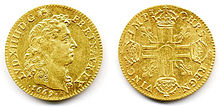
“Louis XIV Gold” by Clicgauche – Wikimedia Commons
Palings: Fence consisting of pickets or pales nailed to horizontal stringers between upright posts.
6.
George Stubbs was a classic English artist from the 18th century who studied and painted horses like no other major artist had ever done before.
Dungannon by George Stubbs – 1793
property of Colonel O’Kelly
Wikigallery
7.
Voltigeur: (1847–1874) was a British Thoroughbred racehorse . In a career that lasted 1849 to 1852 he ran ten times and won five races.
Voltigeur by Sir Henry Edwin Landseer 1851
Voltigeur won the 1850 Derby by a length at 16/1
Landseer was regarded as the greatest animal painter of the 19th century and Voltigeur was the only racehorse he painted. He was fascinated by the fact that the horse’s constant companion was a tortoiseshell cat.
8.
‘Don John detested Bill Scott, owing, it was supposed, to his having hit him twice with a whip in his box at York. All the carrots in the East Riding would not have reconciled them, and like Jack Spigot, it made him furious even to hear the sound of Bill’s voice.’
‘General Chasse, as gluttonous a feeder as ever faced a manger, would pause in his swallow, and grunt if he heard Bob Johnson’s voice ; and Meretrix became so fidgety from hearing Fobert’s at exercise, that he was obliged to employ a code of stick and hand signals to the boy.’
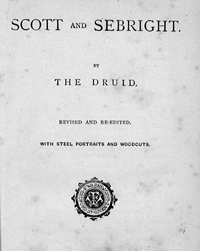
Bill Scott: William Scott (1797–1848) was a very successful English jockey.
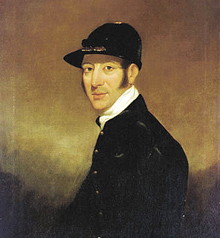
William Scott by English painter John Hayes (1787 – 1866)
Wikimedia
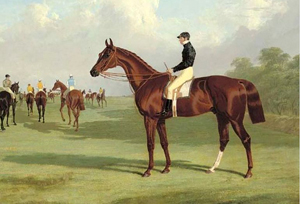
‘Mundig’ with William Scott -1835 Derby
by John Frederick Herring Snr (1795-1865)
English painter, signmaker and coachman
(Wiki Gallery.org)
9.
Guinea: The guinea was the first English machine-struck gold coin, originally worth one pound sterling, equal to twenty shillings; but rises in the price of gold relative to silver caused the value of the guinea to increase, at times to as high as thirty shillings. From 1717 until 1816, its value was officially fixed at twenty-one shillings. Today a ‘guinea’ means one pound and five pence.
(The pound sign is a capital letter ‘L’, written in an old-fashioned handwriting style and with one or two crossbars to show that it is being used as a symbol or abbreviation. The ‘L’ stands for the Latin word libra, the name of a Roman unit of weight)
- Comments(0)
